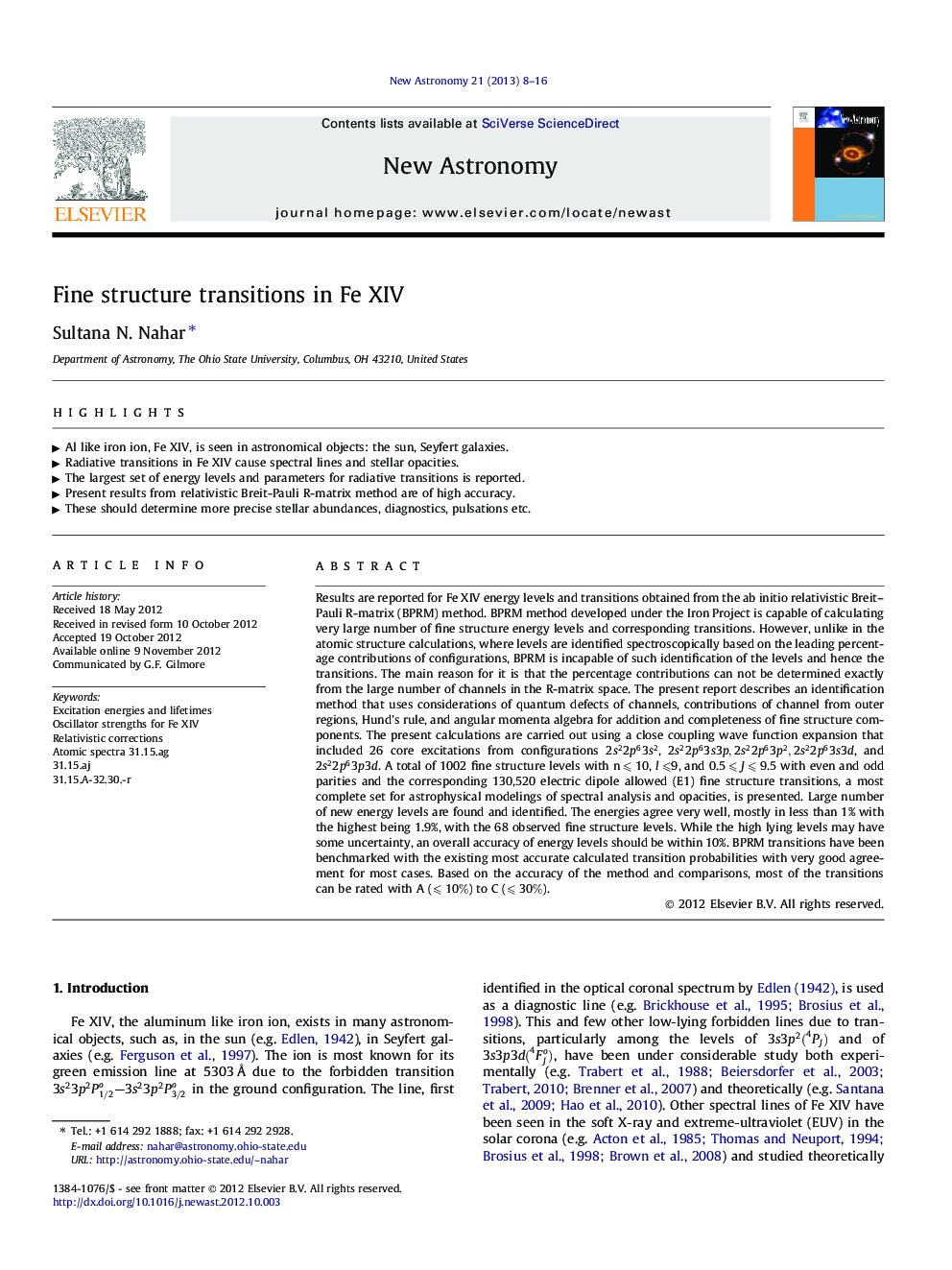| Article ID | Journal | Published Year | Pages | File Type |
|---|---|---|---|---|
| 1779094 | New Astronomy | 2013 | 9 Pages |
Results are reported for Fe XIV energy levels and transitions obtained from the ab initio relativistic Breit–Pauli R-matrix (BPRM) method. BPRM method developed under the Iron Project is capable of calculating very large number of fine structure energy levels and corresponding transitions. However, unlike in the atomic structure calculations, where levels are identified spectroscopically based on the leading percentage contributions of configurations, BPRM is incapable of such identification of the levels and hence the transitions. The main reason for it is that the percentage contributions can not be determined exactly from the large number of channels in the R-matrix space. The present report describes an identification method that uses considerations of quantum defects of channels, contributions of channel from outer regions, Hund’s rule, and angular momenta algebra for addition and completeness of fine structure components. The present calculations are carried out using a close coupling wave function expansion that included 26 core excitations from configurations 2s22p63s22s22p63s2, 2s22p63s3p,2s22p63p2,2s22p63s3d2s22p63s3p,2s22p63p2,2s22p63s3d, and 2s22p63p3d2s22p63p3d. A total of 1002 fine structure levels with n ⩽⩽ 10, l⩽l⩽9, and 0.5 ⩽J⩽⩽J⩽ 9.5 with even and odd parities and the corresponding 130,520 electric dipole allowed (E1) fine structure transitions, a most complete set for astrophysical modelings of spectral analysis and opacities, is presented. Large number of new energy levels are found and identified. The energies agree very well, mostly in less than 1% with the highest being 1.9%, with the 68 observed fine structure levels. While the high lying levels may have some uncertainty, an overall accuracy of energy levels should be within 10%. BPRM transitions have been benchmarked with the existing most accurate calculated transition probabilities with very good agreement for most cases. Based on the accuracy of the method and comparisons, most of the transitions can be rated with A (⩽10%⩽10%) to C (⩽30%⩽30%).
► Al like iron ion, Fe XIV, is seen in astronomical objects: the sun, Seyfert galaxies. ► Radiative transitions in Fe XIV cause spectral lines and stellar opacities. ► The largest set of energy levels and parameters for radiative transitions is reported. ► Present results from relativistic Breit-Pauli R-matrix method are of high accuracy. ► These should determine more precise stellar abundances, diagnostics, pulsations etc.
